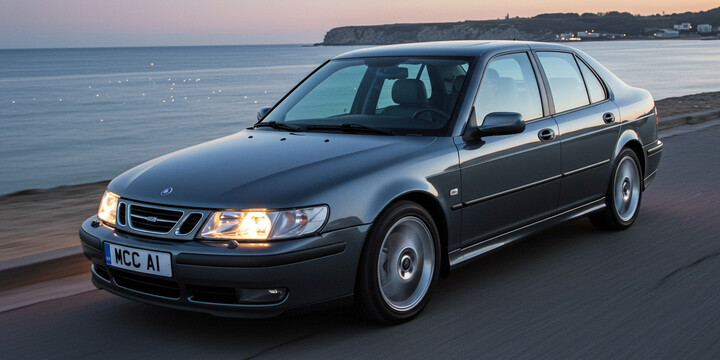
SAAB 9-3 (2002-07) 5DR SPORTWAGON 1.8T 150 VECTOR SPORT ANNIVERSARY BIOPOWER
The SAAB 9-3 (2002-07) 5DR SPORTWAGON 1.8T 150 VECTOR SPORT ANNIVERSARY BIOPOWER is a versatile and stylish estate car designed for UK drivers seeking practicality with a touch of sophistication. As a hatchback-style vehicle, it offers ample space for families, commuters, and those needing extra cargo capacity, making it an excellent choice for everyday use and longer trips. Known for its distinctive Scandinavian design, the SAAB 9-3 SPORTWAGON combines practicality and unique styling, setting it apart from many rivals in the compact estate segment.
This model is equipped with a bioethanol-powered engine, providing an eco-friendly twist that appeals to environmentally conscious drivers. Its balanced performance, combined with comfort and a refined driving experience, makes it a popular choice for those looking for reliability and value—especially in the used car market, where it has an average valuation of around £1,160. With an average mileage of just under 99,200 miles and typically maintained by about 2 to 3 previous owners, this SAAB 9-3 SPORTWAGON stands out as a well-rounded, practical vehicle. Whether you're a family needing space or a driver seeking something unique yet dependable, the SAAB 9-3 (2002-07) 5DR SPORTWAGON 1.8T 150 VECTOR SPORT ANNIVERSARY BIOPOWER offers a distinctive and compelling option in its class.

average use

The most recent mileage readings for the Saab 9-3 (2002-07) 5DR Sportwagon 1.8T 150 Vector Sport Anniversary BioPower indicate that half of the vehicles recorded are between 90,000 and 100,000 miles, while the other half are between 110,000 and 120,000 miles. This suggests a fairly even distribution of mileage within this range, with no vehicles recorded below 90,000 miles or above 120,000 miles in the recent data sample.

vehicle values

The private sale valuation data for the SAAB 9-3 (2002-07) 5DR Sportwagon 1.8T 150 Vector Sport Anniversary Biopower indicates that vehicles within this model and specification are generally valued between £1,000 and £2,000 in the UK. Notably, the entire sample falls within this price range, suggesting a consistent market value for these vehicles at the lower end of the price spectrum. This could reflect the age, condition, or market demand for this particular model. Overall, buyers can expect to find these vehicles primarily within the £1,000 to £2,000 range in private sales.

production years

The data indicates that all examined vehicles of the Saab 9-3 (2002-07) 5DR Sportwagon 1.8T 150 Vector Sport Anniversary BioPower were manufactured in 2007. This suggests a concentrated production period for this model year within the sample, highlighting that 2007 is the sole year of manufacture represented in the data set.

colour popularity

The data indicates that the main paint colours for the SAAB 9-3 (2002-07) 5DR Sportwagon 1.8T 150 Vector Sport Anniversary BioPower are evenly split between Grey and Blue, each accounting for 50% of the sample. This balanced distribution suggests that both colours are equally popular choices among owners of this model.

ownership cycle

The data indicates that, among the sampled SAAB 9-3 (2002-07) 5DR Sportwagon 1.8T 150 Vector Sport Anniversay BioPower vehicles, half (50%) have had three registered keepers, while the other half (50%) have had five registered keepers. This suggests a relatively even distribution between vehicles that have changed hands a few times and those that have been owned by slightly more owners. The data does not provide information beyond these two categories, so it's unclear whether vehicles with fewer or more than three or five keepers are present in the wider population.

engine choices

The data indicates that all vehicles of the SAAB 9-3 (2002-07) 5DR SPORTWAGON 1.8T 150 VECTOR SPORT ANNIVERSARY BIOPOWER model in the sample are equipped with a 1.8-liter engine capacity, and their primary fuel is petrol. This suggests a uniform configuration across the dataset, with no variations in engine size or fuel type for this particular model range.












